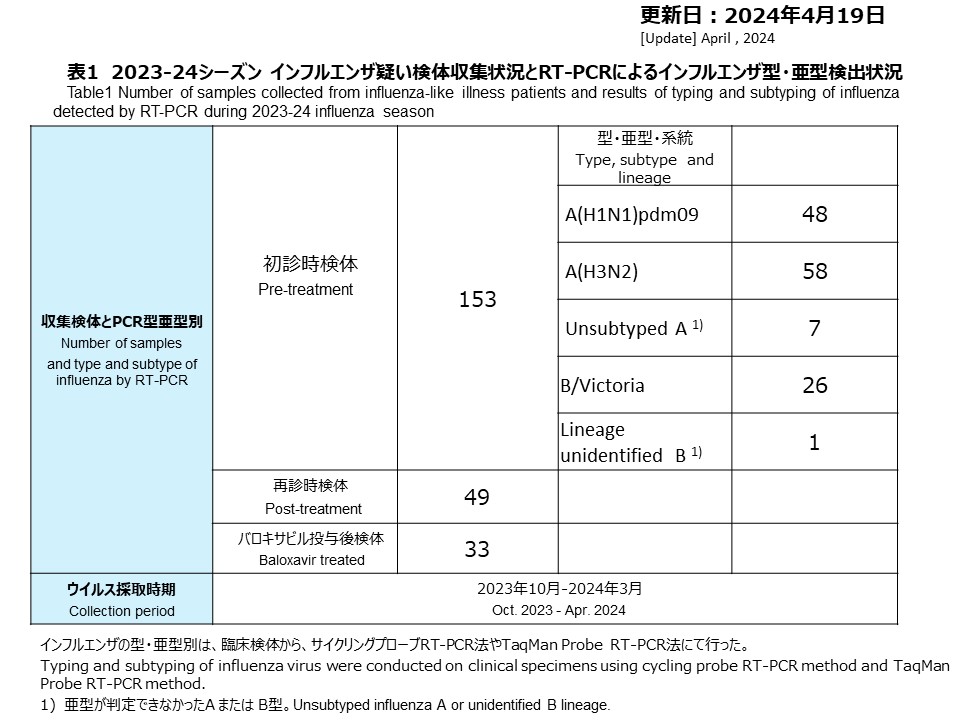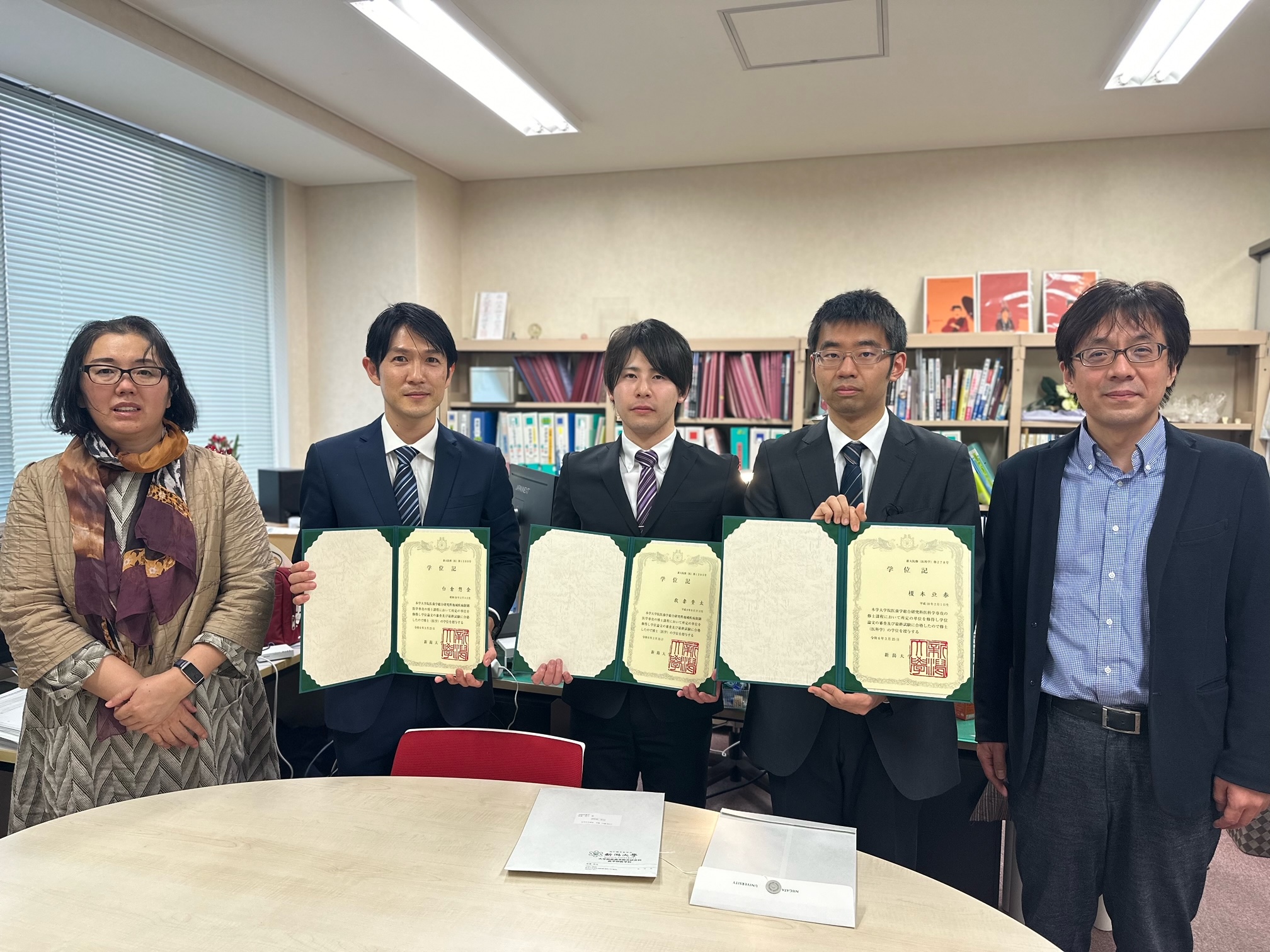2024年2月16日 抗インフルエンザ剤感受性低下株調査の結果
2024年2月16日時点
2023年10月から2024年2月にかけて、合計94件の初診時検体が採取されました。再診時検体は30件採取され、うち18件はバロキサビル投与後に採取されました(表1)。
2023年10月以降、インフルエンザA(H1N1)pdm09を39件、A(H3N2)を35件、インフルエンザA型(亜型が特定できない、又はA(H1N1)pdm09とA(H3N2)の混合株)を8件、B/ビクトリアを1件検出しました(表1,図1)。
今シーズンはA(H1N1)pdm09とA(H3N2)の同時流行であり、インフルエンザ検出数は11月が最も多く、12月以降は徐々に減っています。
インフルエンザウイルスのPA蛋白38位がイソロイシンからスレオニンに変異したウイルス(PA/I38T変異株)は、バロキサビルに対して感受性低下を示すと言われていますが、このPA/I38T変異株を特異的に検出するリアルタイムPCR法(サイクリンブプローブ法)を実施しました。抗インフルエンザ薬投与前のA(H1N1)pdm09の39株、A(H3N2)の35株、B型1株の全てに、PA/I38T変異株は検出されませんでした(表2)。
バロキサビル投与後に採取された検体(再診時検体)は18検体でした(表2)。12件がA(H1N1)pdm09で、うち4件がPCR陽性でしたが、PA/I38T変異は検出されませんでした。A(H3N2)は6件でしたが、PCRは全て陰性でした。このため、PA/I38T変異株は再診時にも検出されませんでした。
[PA遺伝子解析]
次世代シークエンシング(NGS)を実施した初診時検体7件は、A(H1N1)pdm09が5件、A(H3N2)が1件、B型が1件でしたが、バロキサビルに対する感受性低下を示すと報告された変異はPA蛋白に検出されませんでした(表3)。
[NA遺伝子解析]
NGSの結果、A(H1N1)pdm09の5件には、NA阻害剤に対する感受性を低下させる変異はNA遺伝子に検出されませんでした(表4)。
Summary of Results.
As of February 16, 2024
From October 2023 to February 2024, a total of 94 initial visit specimens were collected. There were 30 specimens collected at follow-up visits (second visits), of which 18 were collected after administration of baloxavir (Table 1).
Since October 2023, 39 cases of Influenza A(H1N1)pdm09, 35 cases of A(H3N2), 8 cases of Influenza A t (subtype unidentified or mixed strains of A(H1N1)pdm09 and A(H3N2)), and 1 case of B/Victoria were detected (Table 1 and Figure 1). This season saw a simultaneous circulation of A(H1N1)pdm09 and A(H3N2), with the highest number of influenza detections in November, gradually decreasing from December onwards.
A virus with a substitution at position 38 of the PA protein, from isoleucine to threonine (PA/I38T mutation), is reported to confer reduced sensitivity to baloxavir. We implemented a real-time PCR method (cycling probe method) specifically designed to detect this PA/I38T mutation. None of the 39 of A(H1N1)pdm09, 35 of A(H3N2), and 1 of influenza B collected before administration of antiviral influenza drugs showed the presence of the PA/I38T mutation (Table 2).
There were 18 specimens collected after administration of baloxavir (follow-up visit specimens) (Table 2). Of these, 12 were A(H1N1)pdm09, of which 4 were PCR positive, but the PA/I38T substitution was not detected. There were 6 cases of A(H3N2), all PCR negative at the follow-up specimens. Therefore, the PA/I38T variant strain was not detected in the follow-up visit samples.
[PA Gene Analysis]
Seven initial visit specimens were subjected to next-generation sequencing (NGS), with 5 cases of A(H1N1)pdm09, 1 case of A(H3N2), and 1 case of type B. However, substitution reported to confer reduced sensitivity to baloxavir were not detected in the PA protein (Table 3).
[NA Gene Analysis]
NGS results showed no substitution in the NA gene affecting sensitivity to NA inhibitors in the 5 cases of A(H1N1)pdm09 (Table 4).







